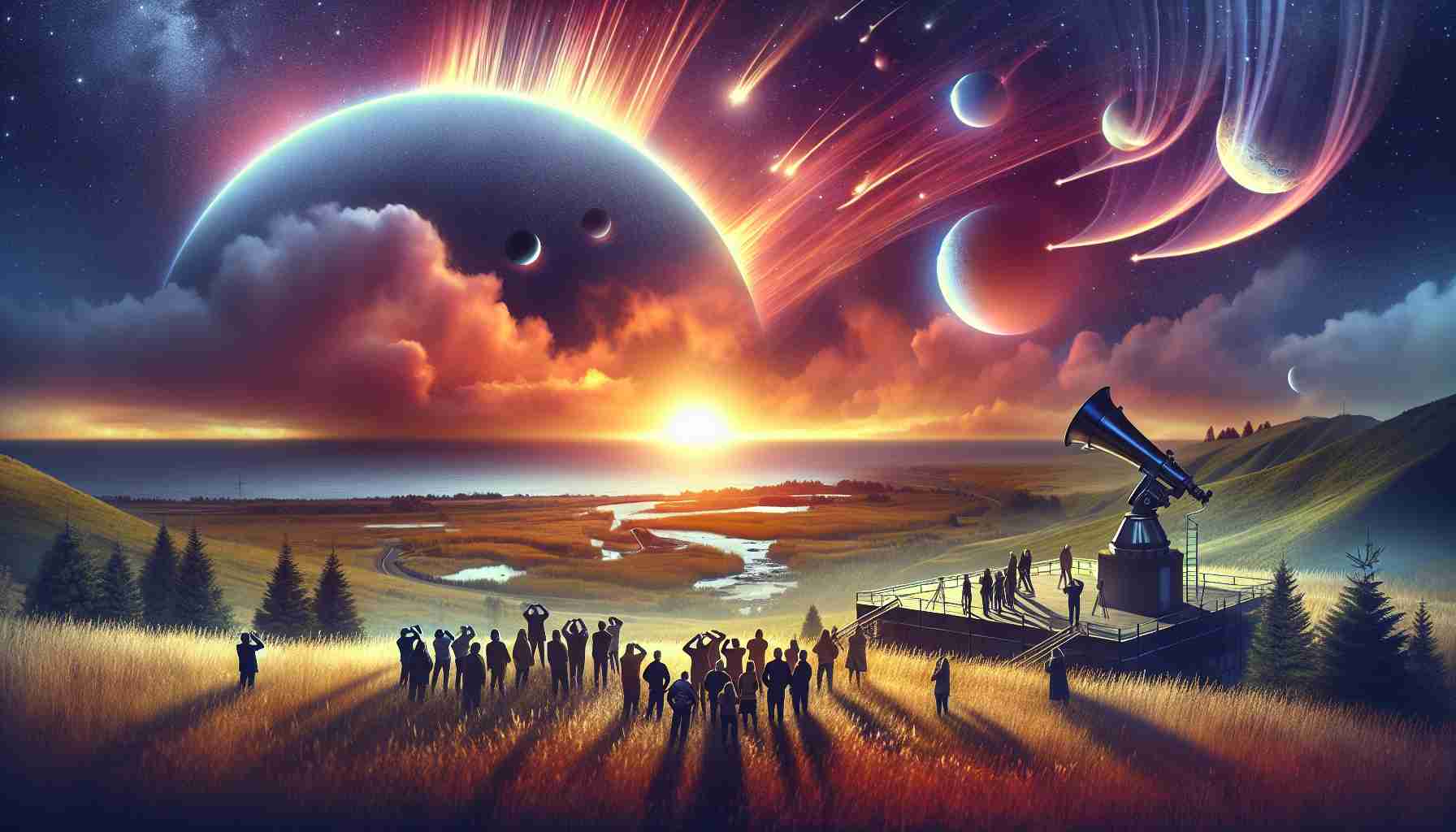Breathtaking celestial displays may light up our skies this weekend. A massive solar eruption is on a path to graze our Earth, promising to enhance the view of the northern lights for many.
A significant event known as a coronal mass ejection (CME) erupted from the sun on January 21 and is expected to reach our planet late Friday night or early Saturday morning, according to the National Oceanic and Atmospheric Administration’s Space Weather Prediction Center.
This solar flare may instigate a minor G1-class geomagnetic storm, which could temporarily disrupt Earth’s magnetic field. Even though G1 storms are mild and often go unnoticed by people, their effects include potential radio blackouts and fluctuations in power grids and satellites. However, these storms also present a unique opportunity for skywatchers, as they can push beautiful auroras farther south than usual, potentially visible across large portions of the northern United States such as northern Michigan and Maine.
Auroras are created when charged solar particles interact with Earth’s magnetic field, energizing atmospheric molecules and producing vibrant light displays. To experience this phenomenon, seek out dark areas away from artificial light, allow your eyes to adjust, and look up. If you miss this weekend’s viewing, don’t worry; solar activity, including CMEs and geomagnetic storms, is expected to increase as we enter the sun’s solar maximum cycle in the coming years.
Exploring the Cosmic Spectacle: Implications Beyond the Skies
The recent solar eruption, heralding potential displays of the northern lights, invites not only skyward gazes but also deeper contemplation about its broader implications on society, culture, and the global economy. The mesmerizing auroras remind us of our intrinsic connection to nature and the cosmos. As natural events stir the human spirit, they often foster a renewed interest in astronomy and a greater appreciation for science, inspiring educational initiatives and enhanced public engagement in environmental stewardship.
Beyond cultural enrichment, geomagnetic storms can have significant economic consequences. Power grids can be vulnerable to fluctuations resulting from geomagnetic activity, which could lead to temporary outages or even damage to infrastructure. For instance, the infamous storm of 1989 knocked out power across Quebec, affecting millions for hours. As we increasingly rely on satellite technology for communications and navigation, the financial ramifications of solar events could escalate, underscoring a need for investment in resilient technologies.
Looking ahead, as we approach the sun’s solar maximum cycle, the frequency and intensity of solar eruptions are predicted to increase, bringing both exciting viewing opportunities for aurora enthusiasts and potential risks to technological systems. The long-term significance lies not only in our appreciation for these celestial displays but also in our preparedness for the challenges they pose to modern life. As we navigate these dual realities, understanding the balance between awe and caution will be crucial for our societal and technological future.
Prepare for a Celestial Show: Catch the Northern Lights This Weekend!
Upcoming Celestial Displays
This weekend, a spectacular natural event may grace our skies as a massive solar eruption, known as a coronal mass ejection (CME), is set to impact Earth. The National Oceanic and Atmospheric Administration’s Space Weather Prediction Center indicates that this CME, which was released from the sun on January 21, will likely reach our planet during the late hours of Friday night or early Saturday morning.
What to Expect: G1-Class Geomagnetic Storm
The anticipated solar flare is expected to cause a minor G1-class geomagnetic storm. G1 storms, while mild, can disrupt Earth’s magnetic field and lead to certain minor effects. Although most people may not notice G1 storms, they can induce sporadic radio blackouts and lead to fluctuations in power grids and satellite communications. On the brighter side, these storms enhance the conditions for observing auroras, enabling skywatchers in the northern United States, particularly areas like northern Michigan and Maine, to witness stunning light displays closer to their locations than usual.
Understanding Auroras: How They Form
Auroras, often referred to as the northern lights, are created when charged solar particles interact with Earth’s magnetic field. This interaction energizes atmospheric molecules, creating colorful and vibrant light displays in our skies.
How to Experience the Auroras
To maximize your chance of experiencing this fascinating phenomenon, consider the following tips:
– Find a Dark Location: Move away from city lights and seek dark, open spaces.
– Give Your Eyes Time to Adjust: Allow approximately 20 minutes for your eyes to adapt to the darkness.
– Look Up: Keep your gaze focused on the northern horizon, as auroras typically occur at high latitudes.
Looking Ahead: Solar Activity Trends
If you miss this weekend’s display, it’s not the end! Solar activity, including CMEs, is expected to rise as we approach the solar maximum cycle. This period is characterized by increased solar activity, leading to more frequent geomagnetic storms and heightened aurora visibility worldwide over the next few years.
Innovations and Insights in Space Weather Monitoring
With advancements in technology, space weather monitoring has become increasingly precise. Real-time data provided by organizations such as the NOAA and other space weather agencies allows for more accurate predictions about solar events and their potential impacts on Earth. Their upgraded satellite systems continuously track solar phenomena, providing crucial information for both professional astronomers and casual skywatchers alike.
Conclusion
Prepare this weekend for a celestial display that could captivate millions. Not only is the upcoming geomagnetic storm expected to create stunning auroras, but it also signals an era of increased solar activity. Keeping an eye on solar weather updates can enhance your skywatching experience, making it easier than ever to enjoy the wonders of our universe!
For more information on solar weather and its effects, visit NOAA.
